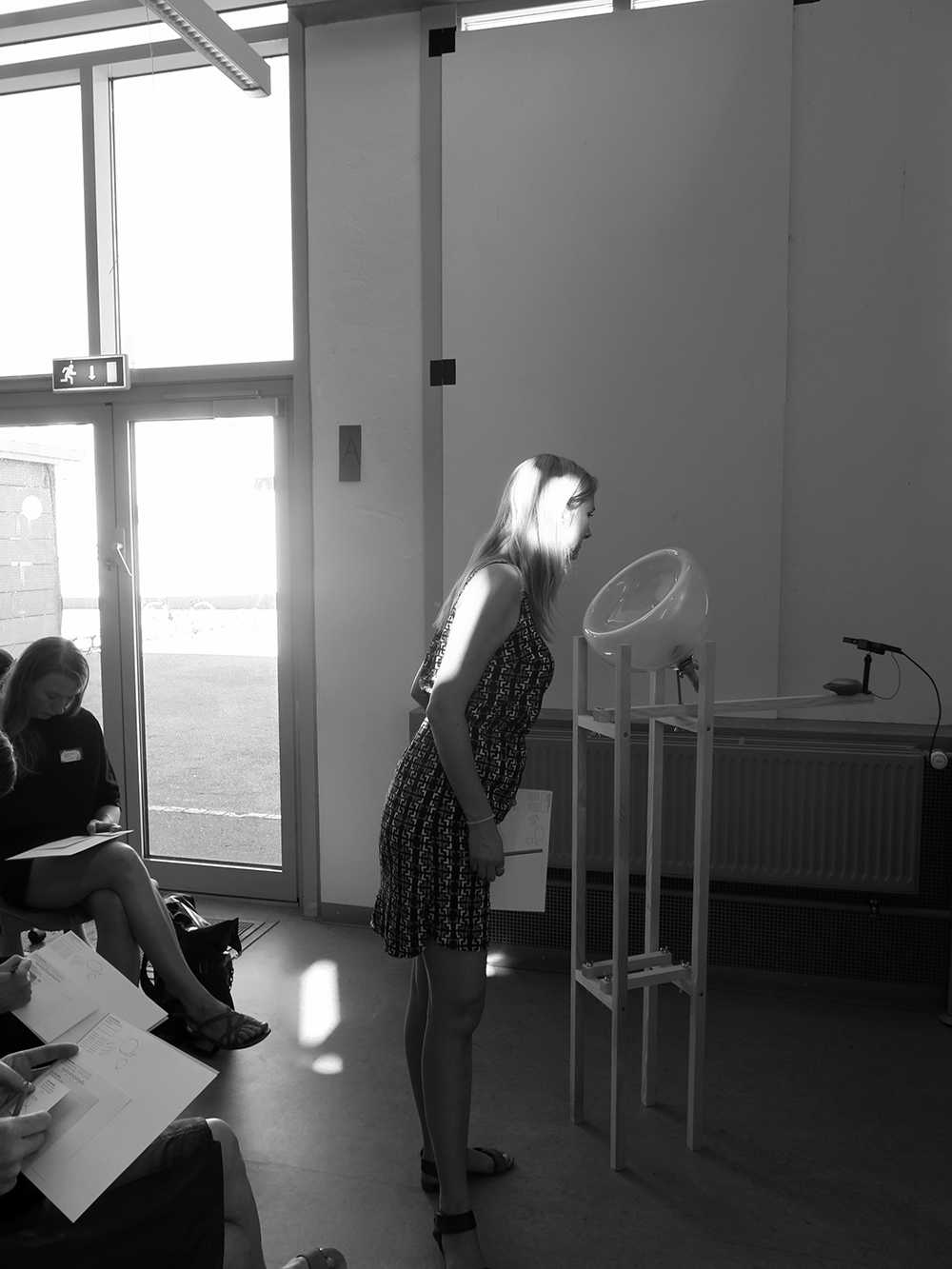Memory Cloud Apparatus
Workshop, Installation, Experience /2017
Project done together with Bettina Schwalm as Present–Futures
‘Memory Cloud Apparatus’ is an experience and workshop that investigates the future of immersive cloud computing. In other words, a future when we will be able to store our actual memories in the ‘cloud’, granting the possibility for others to access a detailed digital version of our ‘physical’ selves.
This idea was born out of speculating the future of caring for patients with dementia, and how a person’s self could be preserved or better yet, understood by caregivers when being given treatment. We piggy backed on concepts like ‘singularity’, the idea stating that man and machine will eventually become one, opening up the possibility to download or upload one’s consciousness to machine based entities in order to surpass the limited lifespan and capacity of the human body as we know it. It seems far-fetched, but we can already see traces with how we build our social media profiles and construct the pieces of our digital selves, accessible by others, albeit using ‘simpler’ technologies.

An Experience Overview
On the 20th of January, 2017, two groups of 10 people were taken on a journey into the ‘future’. It began with each group sitting in a circle in a multi-purpose sculpture studio, located at the back of an old school building. At the center of the circle, a single spotlight shone from above, lighting a speaker box playing Brian Eno’s ‘Airplane Music’; a very soothing, slow, meditative and repetitive song. Participants would slowly trickle in, taking their seats around the circle that once each person was settled would become the site for a time travel exercise. The music would switch over to become a narrator’s voice; their guide on a journey into the future, transporting each participant to a place far from the room they had originally stepped in, and closer to a projected future.
This narrated journey would become the scaffolding upon which each individual’s imagination would construct and fill in the specific details of what would become their own ‘future memory’.
The main encounter in this memory would be with a Memory Cloud Apparatus: the interface device used to access a person’s memories, a medium between the real and the digital. The narration would last roughly 8 minutes when the narrator would welcome the participants back to the present, directing them to an adjacent room where an actual version of the Memory Cloud Apparatus stood, physically.
In its smoke filled glass lens, images of a person’s memories were being projected in a random looping sequence.
Each participant would take their time to experience the moving images, taking as little or as long as needed. The physicality of the Memory Cloud Apparatus became almost like the confirmation of what had just transpired. An object forcing confrontation with the experience itself, allowing one to dive into another’s memories.
After each participant had the chance to experience the Memory Cloud Apparatus, they were brought to another connecting room. This would be the final stage of the workshop where each traveler would take the time to map the memory that was created in the narrated experience.
Beginning from the more personal to eventually being asked to consider more broad societal issues, each individual would have their own individual ‘future memory map’.
Some would find it difficult, others not, given the diversity of the audience. Understanding and placing what had just come to pass, being a future both far and close to their present reality, was a task built on a very personal experience of the future, but that had been created collectively. So come time to have a discussion regarding each person’s thoughts and feelings on the experience, many different sentiments would emerge. The objective wasn’t to steer the conversation, but rather to allow what was important for those individuals at that time having gone through the same experience, to emerge.
Immersive Narrative
Narratives have become an integral part of transporting and immersing people in our work, disconnecting them from what former U.S Secretary of Defence, D. Rumsfeld, coined as the ‘known, knowns’ in order to explore the ‘unknown, unknowns’ with the least amount of inertia. The narrative structure provides the platform to imagine and project oneself into spaces that may not yet exist, acting as a scaffolding upon which meaning is built. Although all participants are brought through the same narrated experience, each individual creates an individual interpretation of that environment, building and projecting meaning that stems from a very personal accumulation of knowledge and experience. This results in the emergence of very individual nuances of truth and reality. The experience therefore becomes believable because it is a self made construct.
Once people are immersed, feel, and negotiate these ‘future-based, but present-oriented’ experiences, a more concrete relationship to otherwise abstract notions becomes established. This relationship builds meaning- meaning helps frame perspective, shifting one’s cognitive understanding to allow for their agency to become more explicit; hopefully leading to rendering people more actionable, by evaluating ideas and concepts constructively and collectively.
